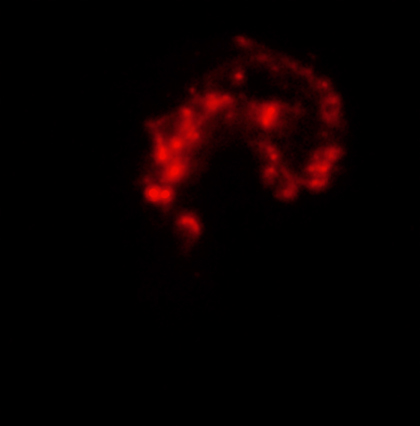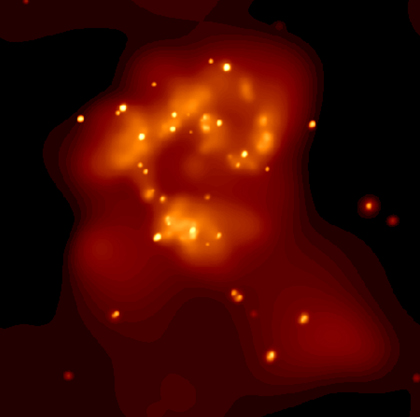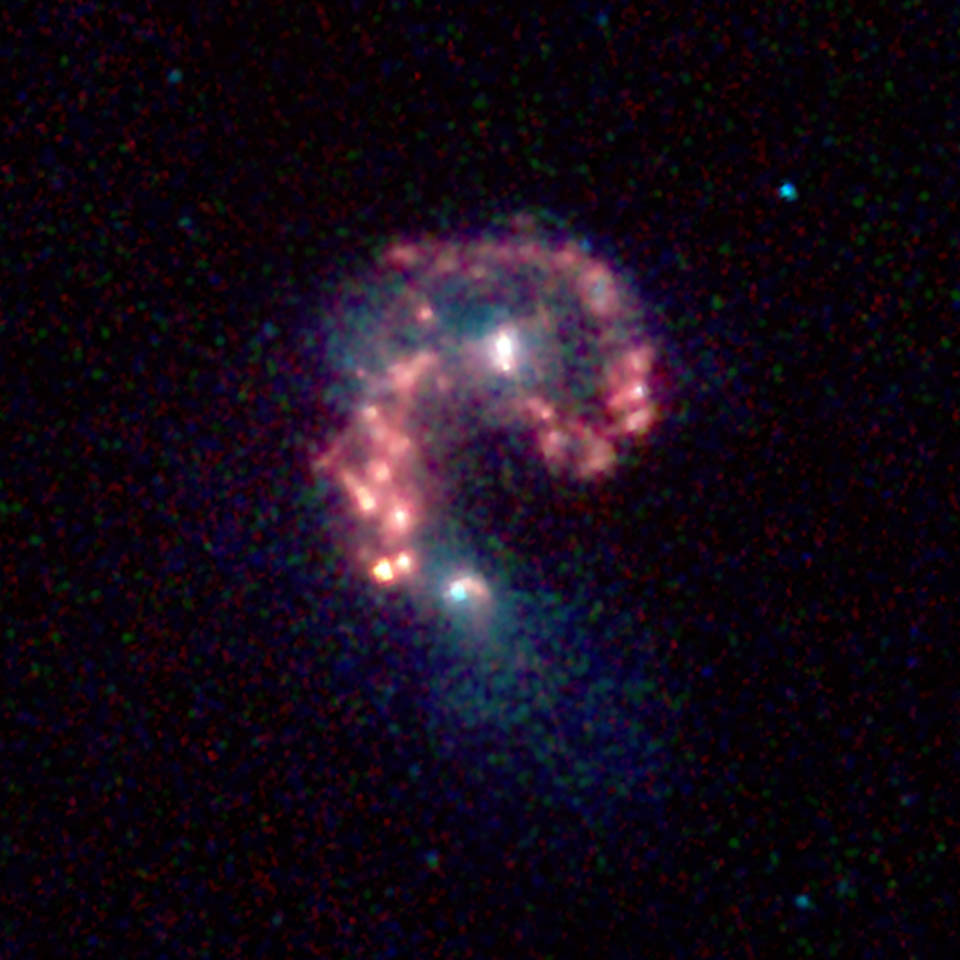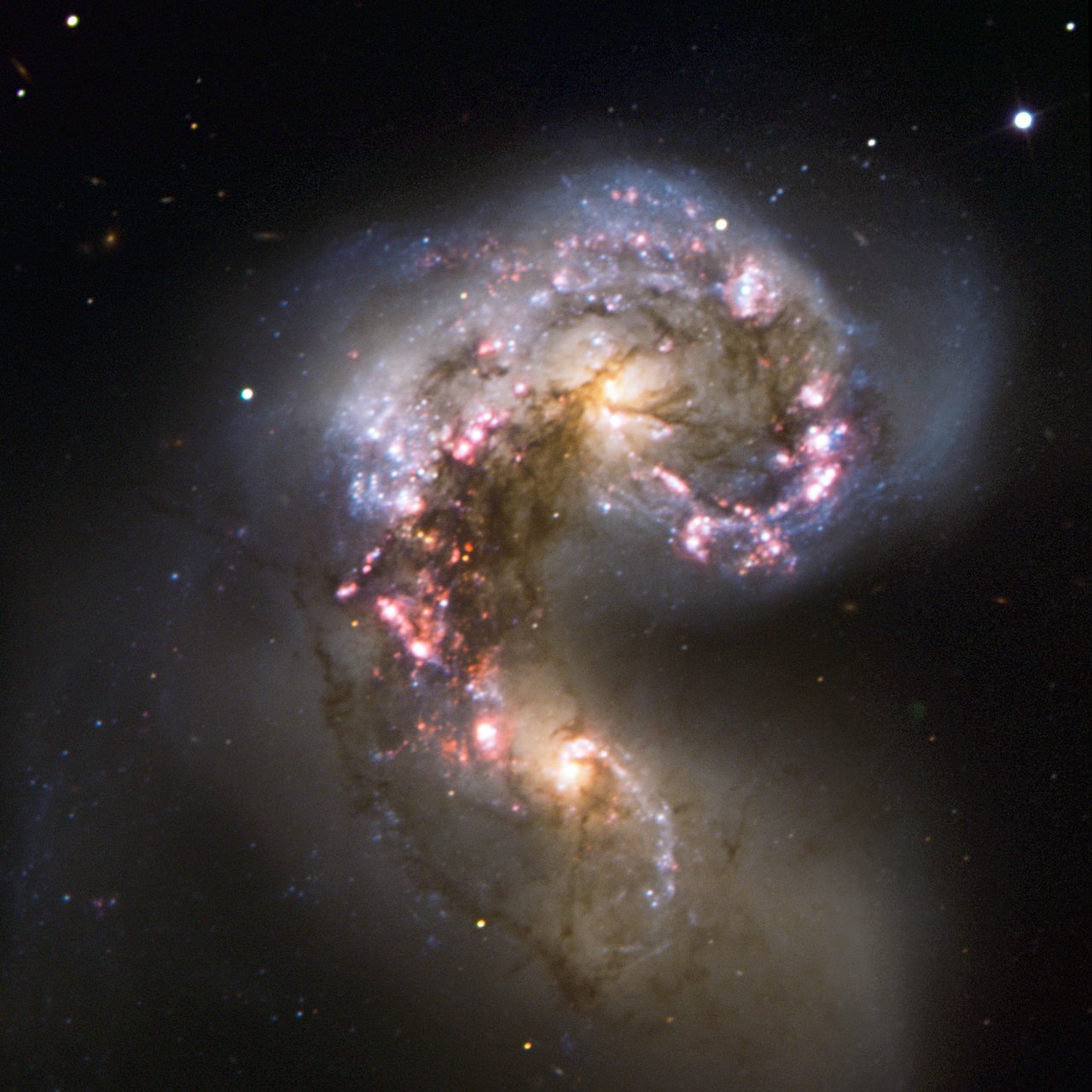I'm sure bystander beat me to it someplace; he always does.
STScI: Antennae Galaxies: A Galactic Spectacle
- orin stepanek
- Plutopian
- Posts: 8200
- Joined: Wed Jul 27, 2005 3:41 pm
- Location: Nebraska
STScI: Antennae Galaxies: A Galactic Spectacle
http://hubblesite.org/newscenter/archiv ... 25/image/a
I'm sure bystander beat me to it someplace; he always does. I can't find it so this is it. Latest Hubble snapshot.
I can't find it so this is it. Latest Hubble snapshot. 
I'm sure bystander beat me to it someplace; he always does.
Orin
Smile today; tomorrow's another day!
Smile today; tomorrow's another day!
Re: STScI: Antennae Galaxies: A Galactic Spectacle
No, orin, you won, this time. Just don't make a habit of it.  Late start for me.
Late start for me.
Antennae: A Galactic Spectacle
NASA SAO CXC Chandra | 05 Aug 2010
NASA's Great Observatories Witness a Galactic Spectacle
NASA JPL-Caltech Spitzer | 05 Aug 2010
A Galactic Spectacle
HubbleSite.org | STScI-2010-25 | 05 Aug 2010
NASA/Space Telescope Science Institute/Hubble

Chandra: X-ray: NASA/CXC/SAO/J.DePasquale - Dec 1999
Spitzer: Infrared: NASA/JPL-Caltech - Dec 2003
Hubble: Optical: NASA/STScI - Jul 2004 / Feb 2005
Antennae: A Galactic Spectacle
NASA SAO CXC Chandra | 05 Aug 2010
NASA's Great Observatories Witness a Galactic Spectacle
NASA JPL-Caltech Spitzer | 05 Aug 2010
A Galactic Spectacle
HubbleSite.org | STScI-2010-25 | 05 Aug 2010
NASA/Space Telescope Science Institute/Hubble
- A beautiful new image of two colliding galaxies has been released by NASA's Great Observatories. The Antennae galaxies, located about 62 million light-years from Earth, are shown in this composite image from the Chandra X-ray Observatory (blue), the Hubble Space Telescope (gold and brown), and the Spitzer Space Telescope (red). The Antennae galaxies take their name from the long antenna-like "arms," seen in wide-angle views of the system. These features were produced by tidal forces generated in the collision.
The collision, which began more than 100 million years ago and is still occurring, has triggered the formation of millions of stars in clouds of dusts and gas in the galaxies. The most massive of these young stars have already sped through their evolution in a few million years and exploded as supernovas.
Credit: NASA/ESA/SAO/CXC/JPL-Caltech/STScI

Chandra: X-ray: NASA/CXC/SAO/J.DePasquale - Dec 1999
- The X-ray image from Chandra shows huge clouds of hot, interstellar gas that have been injected with rich deposits of elements from supernova explosions. This enriched gas, which includes elements such as oxygen, iron, magnesium, and silicon, will be incorporated into new generations of stars and planets. The bright, point-like sources in the image are produced by material falling onto black holes and neutron stars that are remnants of the massive stars. Some of these black holes may have masses that are almost one hundred times that of the Sun.

Spitzer: Infrared: NASA/JPL-Caltech - Dec 2003
- The Spitzer data show infrared light from warm dust clouds that have been heated by newborn stars, with the brightest clouds lying in the overlapping region between the two galaxies.

Hubble: Optical: NASA/STScI - Jul 2004 / Feb 2005
- The Hubble data reveal old stars and star-forming regions in gold and white, while filaments of dust appear in brown. Many of the fainter objects in the optical image are clusters containing thousands of stars.
Re: STScI: Antennae Galaxies: A Galactic Spectacle
WOWIE!! I don't think that I've ever seen so many things going on in one place in space like this before. This Galaxy sure lives up to it's name!
This photo would make a good Apod for a few days. It would take that long to take a good look at everything.
I vote for "A Galactic Spectacle" as the picture of the year.
This photo would make a good Apod for a few days. It would take that long to take a good look at everything.
I vote for "A Galactic Spectacle" as the picture of the year.
To find the Truth, you must go Beyond.
Re: STScI: Antennae Galaxies: A Galactic Spectacle
Antennae: Superbubbles Bespeak Toil and Trouble
NASA SAO CXC Chandra | 15 Aug 2000
NASA JPL-Caltech Spitzer | 07 Sep 2004
NASA STScI/AURA Hubble Heritage | 17 Oct 2006
http://asterisk.apod.com/viewtopic.php?f=9&t=20259
NASA SAO CXC Chandra | 15 Aug 2000
- Chandra observed the Antennae with the Advanced CCD Imaging Spectrometer (ACIS) for 20 hours on December 1, 1999. This image is the initial release of that data, the same data used to prepare the blue Chandra X-ray image above.
This Chandra X-ray image of the Antennae (NGC4038/4039) shows the central regions of two galaxies in collision. The dozens of bright point-like sources are neutron stars or black holes pulling gas off nearby stars. The bright fuzzy patches are superbubbles thousands of light years in diameter that were produced by the accumulated power of thousands of supernovas. The remaining glow of X-ray emission could be due to many faint X-ray sources, or to clouds of hot gas in the galaxies.
Credit: NASA/SAO/CXC/G.Fabbiano et al.
NASA JPL-Caltech Spitzer | 07 Sep 2004
- This Spitzer image was prepared from the same data (Dec 2003) as the red Spitzer infrared image above.
This false-color image from NASA's Spitzer Space Telescope reveals hidden populations of newborn stars at the heart of the colliding "Antennae" galaxies. These two galaxies, known individually as NGC 4038 and 4039, are located around 68 million light-years away and have been merging together for about the last 800 million years. The latest Spitzer observations provide a snapshot of the tremendous burst of star formation triggered in the process of this collision, particularly at the site where the two galaxies overlap.
This picture was taken by Spitzer's infrared array camera and is a combination of infrared light ranging from 3.6 microns (blue), 4.5 microns (green), 5.8 microns (red), to 8.0 microns (red). It shows infrared light from warm dust clouds heated by newborn stars. The dust emission (red) is by far the strongest feature in this image. Starlight was systematically subtracted from the longer wavelengths to enhance dust features.
Credit: NASA/JPL-Caltech/Z. Wang (CfA)
NASA STScI/AURA Hubble Heritage | 17 Oct 2006
- This image from the Hubble Heritage Team was made from the same Hubble data (Jul 2004 / Feb 2005) as the gold Hubble optical image above.
This image is a composite of many separate exposures made by the ACS/WCF instrument on the Hubble Space Telescope using several different filters. Four filters were used to sample broad and narrow wavelength ranges. The color results from assigning different hues (colors) to each monochromatic image. In this case, the assigned colors are: F435W (B) blue, F550M (y) green, F658N (Hα+[N II]) pink, F814W (I) red.
The two spiral galaxies started to interact a few hundred million years ago, making the Antennae galaxies one of the nearest and youngest examples of a pair of colliding galaxies. Nearly half of the faint objects in the Antennae image are young clusters containing tens of thousands of stars. The orange blobs to the left and right of image center are the two cores of the original galaxies and consist mainly of old stars criss-crossed by filaments of dust, which appears brown in the image. The two galaxies are dotted with brilliant blue star-forming regions surrounded by glowing hydrogen gas, appearing in the image in pink.
Credit: NASA, ESA, and the Hubble Heritage Team (STScI/AURA)-ESA/Hubble Collaboration
- Wide-field Optical Image
The Antennae galaxies take their name from the long antenna-like "arms," seen in wide-angle views of the system. These features were produced by tidal forces generated in the collision.
Credit: Digitized Sky Survey
http://asterisk.apod.com/viewtopic.php?f=9&t=20259
Re: STScI: Antennae Galaxies: A Galactic Spectacle
It is interesting to see that while most of the activity in this colliding pair takes place in one of the galaxy, NGC 4038 (and of course in the bridge between the two galaxies), NGC 4039 has a few scattered X-ray-bright black holes, which are perhaps remnants of a more gas-rich and starforming past of this galaxy.
Ann
Ann
Color Commentator
ESO: ALMA Opens Its Eyes
ALMA Opens Its Eyes
ESO | ALMA | 2011 Oct 03
http://asterisk.apod.com/viewtopic.php?f=8&t=25464
ESO | ALMA | 2011 Oct 03
Humanity's most complex ground-based astronomy observatory, the Atacama Large Millimeter/submillimeter Array (ALMA), has officially opened for astronomers. The first released image, from a telescope still under construction, reveals a view of the Universe that cannot be seen at all by visible-light and infrared telescopes. Thousands of scientists from around the world have competed to be among the first few researchers to explore some of the darkest, coldest, furthest, and most hidden secrets of the cosmos with this new astronomical tool.
At present, around a third of ALMA’s eventual 66 radio antennas, with separations up to only 125 metres rather than the maximum 16 kilometres, make up the growing array on the Chajnantor plateau in northern Chile, at an elevation of 5000 metres. And yet, even under construction, ALMA has become the best telescope of its kind — as reflected by the extraordinary number of astronomers who requested time to observe with ALMA.
“Even in this very early phase ALMA already outperforms all other submillimetre arrays. Reaching this milestone is a tribute to the impressive efforts of the many scientists and engineers in the ALMA partner regions around the world who made it possible,” said Tim de Zeeuw, Director General of ESO, the European partner in ALMA.
ALMA observes the Universe in light with millimetre and submillimetre wavelengths, roughly one thousand times longer than visible-light wavelengths. Using these longer wavelengths allows astronomers to study extremely cold objects in space — such as the dense clouds of cosmic dust and gas from which stars and planets form — as well as very distant objects in the early Universe.
ALMA is radically different from visible-light and infrared telescopes. It is an array of linked antennas acting as a single giant telescope, and it detects much longer wavelengths than those of visible light. Its images therefore look quite unlike more familiar pictures of the cosmos.
The ALMA team has been busy testing the observatory’s systems over the past few months, in preparation for the first round of scientific observations, known as Early Science. One outcome of their tests is the first image published from ALMA, albeit from what is still very much a growing telescope. Most of the observations used to create this image of the Antennae Galaxies were made using only twelve antennas working together — far fewer than will be used for the first science observations — and with the antennas much closer together as well. Both of these factors make the new image just a taster of what is to come. As the observatory grows, the sharpness, efficiency, and quality of its observations will increase dramatically as more antennas become available and the array grows in size [1].
The Antennae Galaxies are a pair of colliding galaxies with dramatically distorted shapes. While visible light shows us the stars in the galaxies, ALMA’s view reveals something that cannot be seen in visible light: the clouds of dense cold gas from which new stars form [2]. This is the best submillimetre-wavelength image ever made of the Antennae Galaxies. ...
- The quality of images from an interferometric telescope like ALMA depends on both the separations and the number of the antennas. Larger separations mean that sharper images can be created and if more antennas are working together more detailed images can be produced.
- While visible light — shown here mainly in blue — reveals the newborn stars in the galaxies, ALMA’s view shows us something that cannot be seen at those wavelengths: the clouds of dense cold gas from which new stars form. The ALMA observations — shown here in orange and yellow — were made at specific wavelengths of millimetre and submillimetre light (ALMA bands 3, 6 and 7), tuned to detect carbon monoxide molecules in the otherwise invisible hydrogen clouds, where new stars are forming.
Zoomable Image
http://asterisk.apod.com/viewtopic.php?f=8&t=25464
Know the quiet place within your heart and touch the rainbow of possibility; be
alive to the gentle breeze of communication, and please stop being such a jerk. — Garrison Keillor
alive to the gentle breeze of communication, and please stop being such a jerk. — Garrison Keillor
ESO: VLT Observes the Antennae Galaxies
VLT Observes the Antennae Galaxies
ESO Picture of the Week | 2011 Oct 03
ESO Picture of the Week | 2011 Oct 03
A new Very Large Telescope (VLT) image of the Antennae Galaxies gives us what may be the second-best visible-light view yet of this striking pair of colliding galaxies with dramatically distorted shapes. This amazing object takes its name from the long antenna-like "arms" extending far out from the nuclei of the two galaxies, best seen in wider-field images by ground-based telescopes such as the one at this link.
This VLT view focuses instead on the galaxies’ nuclei, where the real action is taking place as the two galaxies merge into a single giant galaxy. Spurred by shock waves created by their gravitational wrestling, the two galaxies have become dotted with brilliant blue hot young stars in star-forming regions, surrounded by glowing hydrogen gas, shown here in pink. The two pale yellow blobs are the cores of the original galaxies, shining with the light of old stars and picked out by delicate lanes of dust.
The Antennae Galaxies were immortalised in 2006 by one of the NASA/ESA Hubble Space Telescope’s most famous images (composed by ESA’s Hubble group residing at ESO).
If you are hungry for more information about this amazing object, read the just-published ESO press release about the first image from ALMA, the Atacama Large Millimeter/submillimeter Array, which has just started its Early Science observations. ALMA , constructed by ESO and its international partners, observes the Universe in light with millimetre and submillimetre wavelengths — radically different from visible-light and infrared telescopes. ALMA’s view is the best submillimetre-wavelength image ever made of the Antennae Galaxies, despite being just a taster of what ALMA will deliver. The ALMA image was made using test data from only twelve antennas, and as the observatory grows, the sharpness, efficiency, and quality of its observations will increase dramatically.
Credit: ESO/VLT
Zoomable Image
Know the quiet place within your heart and touch the rainbow of possibility; be
alive to the gentle breeze of communication, and please stop being such a jerk. — Garrison Keillor
alive to the gentle breeze of communication, and please stop being such a jerk. — Garrison Keillor
- neufer
- Vacationer at Tralfamadore
- Posts: 18805
- Joined: Mon Jan 21, 2008 1:57 pm
- Location: Alexandria, Virginia
Re: STScI: Antennae Galaxies: A Galactic Spectacle


Fiddlehead sculpture at the Saint John Arts Centre in Saint John, New Brunswick, Canada
Art Neuendorffer
Re: STScI: Antennae Galaxies: A Galactic Spectacle
And I used to think that the Antennae was sometimes called the "Shrimp-Tail galaxy" because of its shape, with one of the colliding galaxies (the Shrimp) containing most of the star formation and being much more visibly striking than the other one (the Tail).
But now we should perhaps start calling the Antennae the Fiddlehead Galaxy, then?
Ann
But now we should perhaps start calling the Antennae the Fiddlehead Galaxy, then?
Ann
Last edited by Ann on Tue Oct 04, 2011 7:40 am, edited 1 time in total.
Color Commentator
Re: STScI: Antennae Galaxies: A Galactic Spectacle
At least it's not a fiddleback. I don't really want to look at them, and I definitely don't want any close encounters with them.
Know the quiet place within your heart and touch the rainbow of possibility; be
alive to the gentle breeze of communication, and please stop being such a jerk. — Garrison Keillor
alive to the gentle breeze of communication, and please stop being such a jerk. — Garrison Keillor
Re: STScI: Antennae Galaxies: A Galactic Spectacle
bystander wrote:At least it's not a fiddleback. I don't really want to look at them, and I definitely don't want any close encounters with them.

Really?
Ann
Color Commentator






